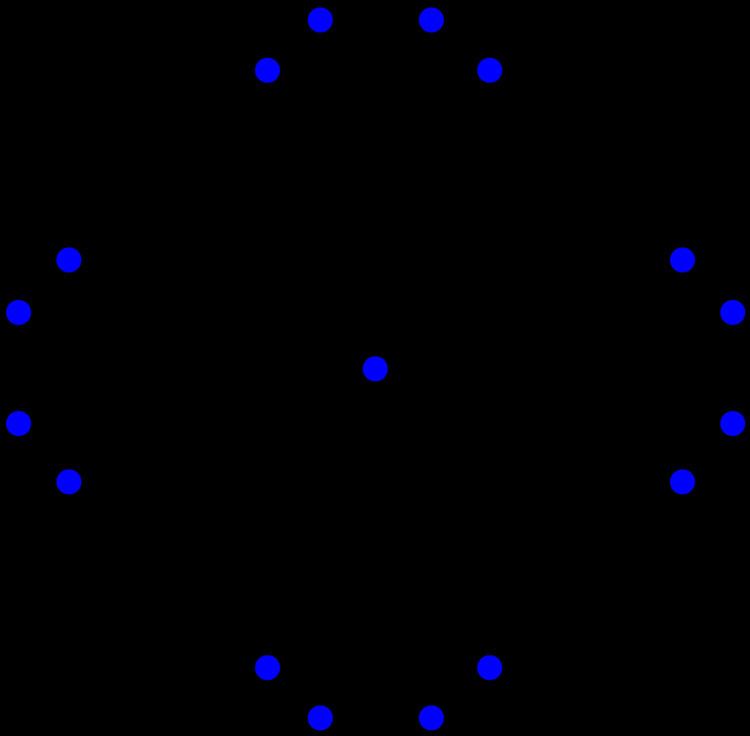Vertices (k-1)n+1 Radius 1 Girth 3 if k > 2 | Edges nk(k−1)/2 Diameter 2 Chromatic number k | |
 | ||
In the mathematical field of graph theory, the windmill graph Wd(k,n) is an undirected graph constructed for k ≥ 2 and n ≥ 2 by joining n copies of the complete graph Kk at a shared vertex. That is, it is a 1-clique-sum of these complete graphs.
Contents
Properties
It has (k-1)n+1 vertices and nk(k−1)/2 edges, girth 3 (if k > 2), radius 1 and diameter 2. It has vertex connectivity 1 because its central vertex is an articulation point; however, like the complete graphs from which it is formed, it is (k-1)-edge-connected. It is trivially perfect and a block graph.
Special cases
By construction, the windmill graph Wd(3,n) is the friendship graph Fn, the windmill graph Wd(2,n) is the star graph Sn and the windmill graph Wd(3,2) is the butterfly graph.
Labeling and colouring
The windmill graph has chromatic number k and chromatic index n(k-1). Its chromatic polynomial can be deduced form the chromatic polynomial of the complete graph and is equal to
The windmill graph Wd(k,n) is proved not graceful if k > 5. In 1979, Bermond has conjectured that Wd(4,n) is graceful for all n ≥ 4. This is known to be true for n ≤ 22. Bermond, Kotzig, and Turgeon proved that Wd(k,n) is not graceful when k = 4 and n = 2 or n = 3, and when k = 5 and m = 2. The windmill Wd(3,n) is graceful if and only if n ≡ 0 (mod 4) or n ≡ 1 (mod 4).
